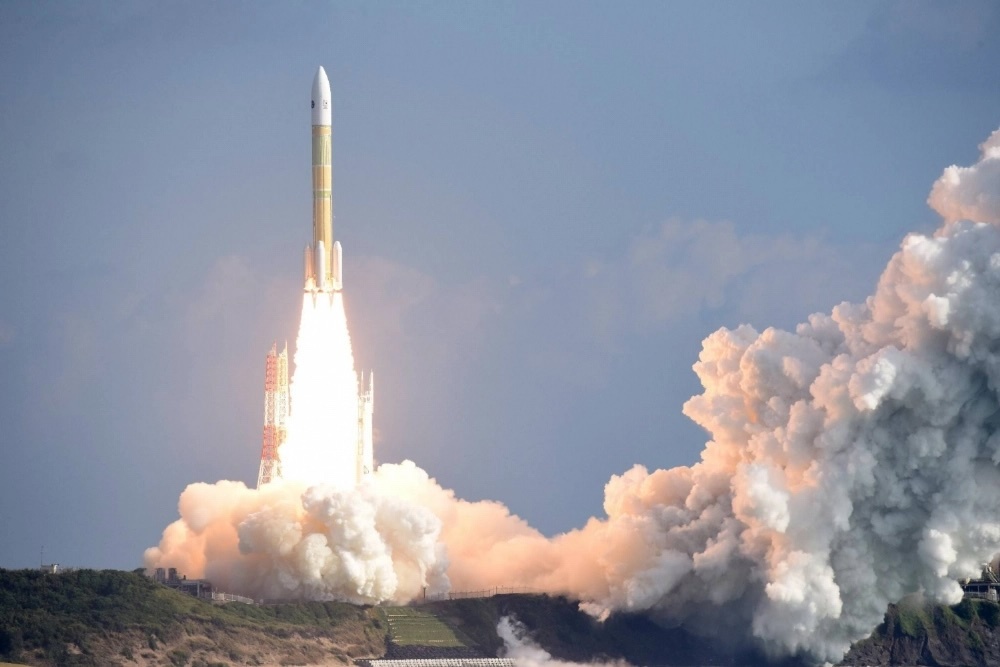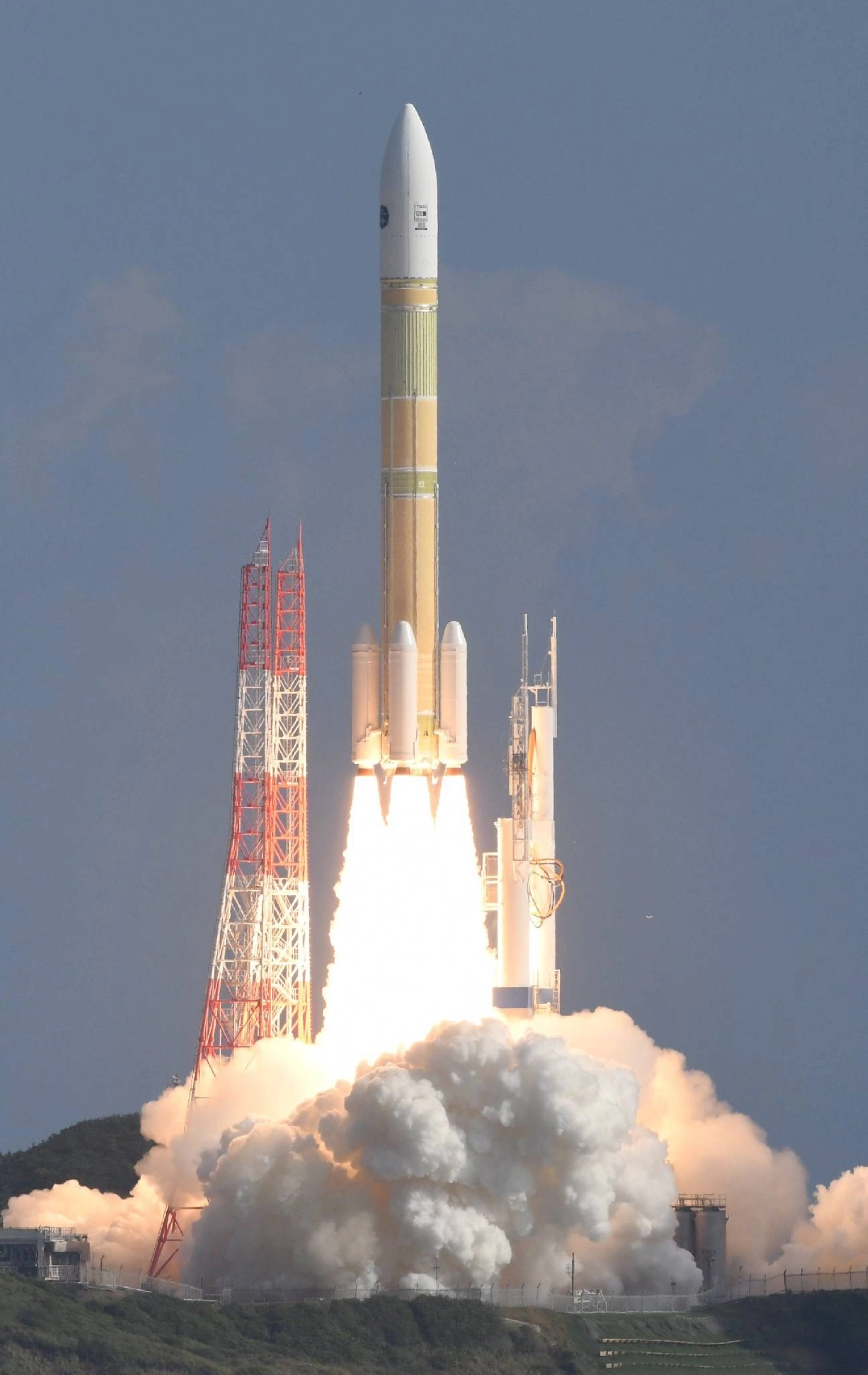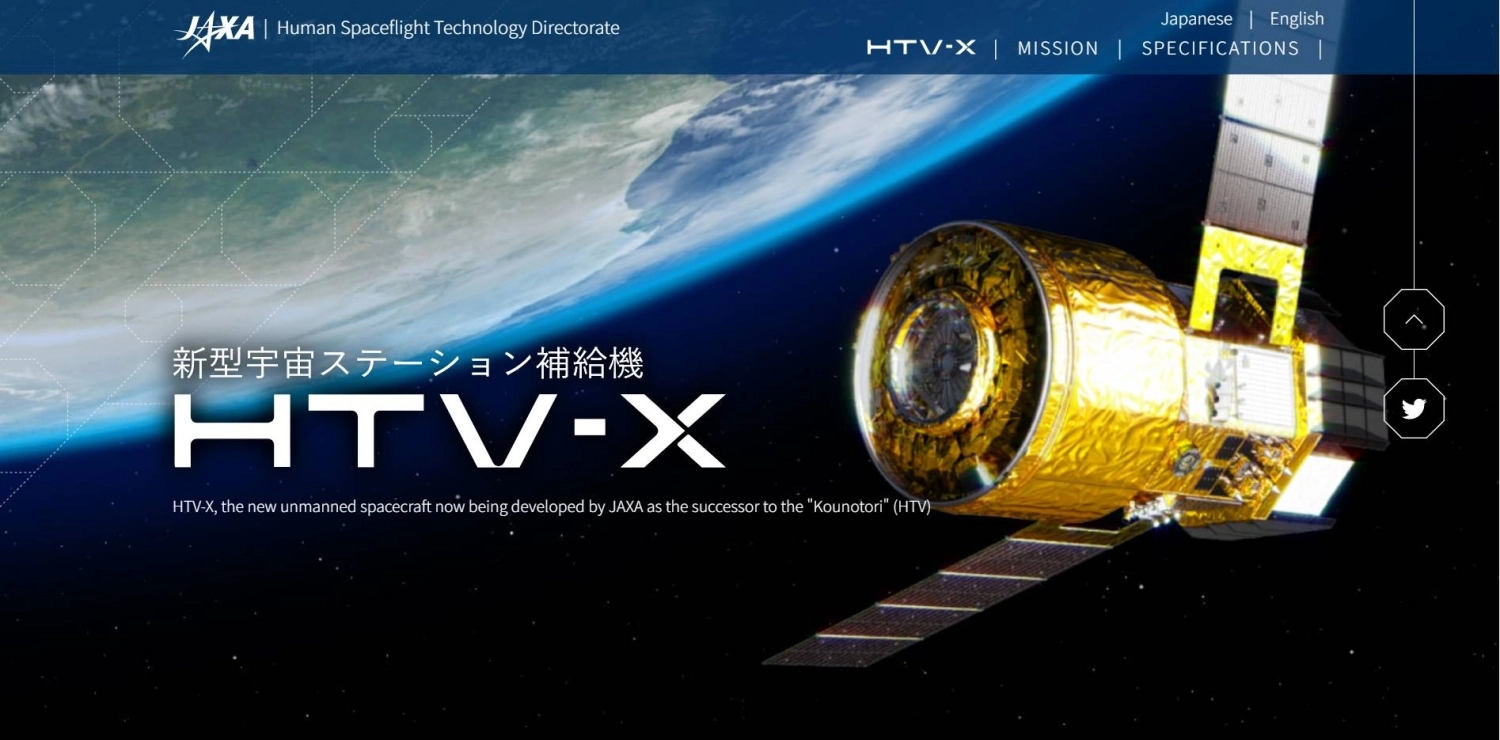26.10.2025
Japan successfully launches new cargo spacecraft to deliver supplies to ISS
Japan's space agency successfully launched its most powerful H3 rocket, carrying a newly developed unmanned cargo spacecraft for its first mission to deliver supplies to the International Space Station
TOKYO -- Japan's space agency successfully launched Sunday its most powerful flagship H3 rocket, carrying a newly developed unmanned cargo spacecraft for its first mission to deliver supplies to the International Space Station.
The Japan Aerospace Exploration Agency said the HTV-X1 spacecraft successfully lifted off atop the No. 7 H3 rocket from Japan’s Tanegashima Space Center in the country's south and confirmed it entered targeted orbit 14 minutes after liftoff.
The spacecraft was separated and placed into a planned orbit, JAXA said. If everything goes smoothly, it is expected to arrive at the ISS in a few days to deliver supplies. Japanese astronaut Kimiya Yui, currently at the ISS, is set to catch the craft with a robot arm in the early hours of Thursday.
The HTV-X is the successor to JAXA’s unmanned H-II Transfer Vehicle, known as Kounotori, or stork in Japanese, which flew nine missions to the ISS between 2009 and 2020.
The new freighter can carry a bigger payload and supply power during flight, enabling the transport of lab samples that require storage at low temperatures.
The HTV-X is designed to be connected to the ISS for up to six months to deliver supplies and retrieve waste from the ISS, then conduct technical missions while making an orbital flight after leaving the station, this time for three months.
Sunday’s launch also marks a successful debut for H3 rocket’s most powerful version, with four rocket boosters and a bigger fairing, a top compartment for payloads, officials said.
JAXA President Hiroshi Yamakawa called Sunday's launch “a major step forward” that demonstrated Japan's capability of delivering supplies to space, which serves as “the basis of autonomous space activity.”
Iwao Igarashi, head of the Space Business Department at Mitsubishi Heavy Industries, responsible for developing H3 with JAXA and operating rocket launches, said Japan's track record of on-time launch and accuracy in delivering payloads and the newly modified rocket prove they can accommodate a range of customer needs. He said his company plans to expand its launch facility.
H3 rocket replaces Japan's long-beloved mainstay H-2A rocket, which made its final flight in June, as a new flagship model designed to be more cost-competitive in the global space market. The H3 has so far made six consecutive successful flights after a failed debut attempt in 2023, when the rocket had to be destroyed with its payload.
Japan sees a stable, commercially competitive space transport capability as key to its space program and national security.
Quelle: abcNews
+++
JAXA launches new HTV-X1 cargo spacecraft to International Space Station

The Japan Aerospace Exploration Agency (JAXA) successfully launched its new HTV-X1 cargo spacecraft to the International Space Station (ISS) on Sunday morning.
It will be the first time in five years for Japan to send supplies to the ISS.
The unmanned vehicle lifted off for its maiden voyage aboard the seventh H3 rocket from JAXA’s Tanegashima Space Center on Tanegashima Island in Kagoshima Prefecture at around 9 a.m. Sunday.
Cheers erupted in the mission control room at 9:15 a.m., when the HTV-X1 successfully separated from the H3 rocket and entered orbit.
Developed by JAXA and Mitsubishi Heavy Industries (MHI), the HTV-X1 is the successor to the HTV Kounotori series that successfully carried out nine resupply missions between 2009 and 2020. The new spacecraft, which cost about ¥35.6 billion to develop, is approximately 8 meters long, weighs 16 metric tons and can carry up to 5.8 tons of cargo. The launch configuration this time around used two additional solid rocket boosters compared with previous H3 rocket launches.

"The HTV-X represents the important role and responsibility Japan should fulfill for the ISS. It's very significant that our path forward has now become clearer today," JAXA President Hiroshi Yamakawa said at a news conference following the launch.
"I am elated that we have succeeded in this important mission in launching the HTV-X1 to the ISS," said Iwao Igarashi, vice president and senior general manager of the space systems division at MHI. "It's all thanks to everyone involved, including the local people here."
The HTV-X1’s pressurized compartment holds nitrogen, oxygen, water supply tanks, food and other consumables for those aboard the ISS, along with equipment to be used to conduct scientific experiments in space.
The vehicle was placed into an elliptical orbit by the H3 rocket and will climb to roughly 400 kilometers to link up with the ISS a couple of days after the launch. The craft will be captured by a robotic arm operated by JAXA astronaut Kimiya Yui, currently on a long-term mission aboard the station.
The original launch was planned for last Tuesday, but was postponed due to poor weather. Two days into the delay, Yui posted on X that he had made a teruteru bōzu, a Japanese doll made of tissue paper that is traditionally hung from a window to wish for good weather.
The HTV-X1 can be berthed on the ISS for up to six months, but is designed to operate independently for as long as 18 months after leaving the ISS, allowing it to serve as a platform for in-orbit experiments and small satellite deployments after completing its resupply duties.

